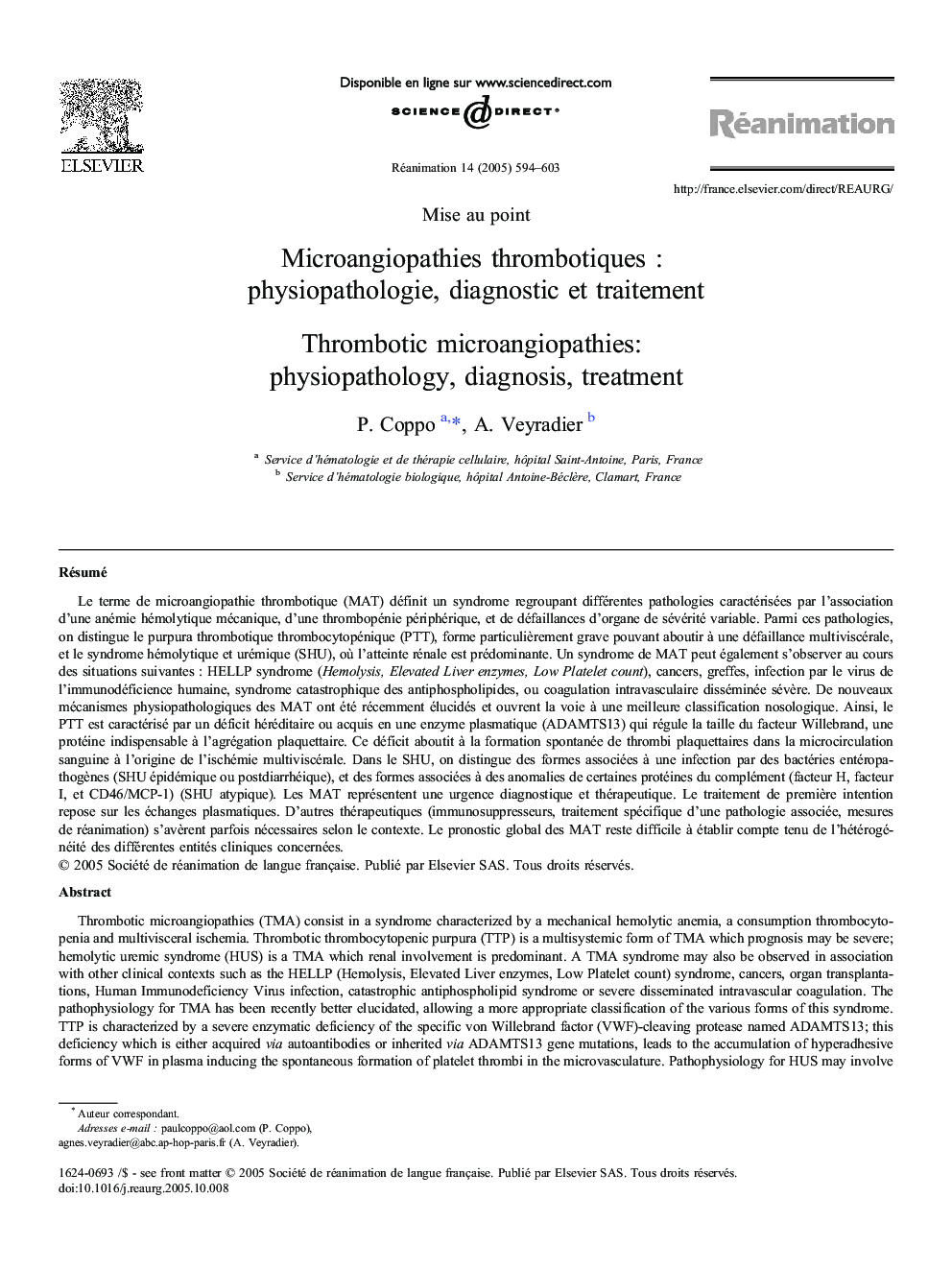| Article ID | Journal | Published Year | Pages | File Type |
|---|---|---|---|---|
| 9045065 | Réanimation | 2005 | 10 Pages |
Abstract
Thrombotic microangiopathies (TMA) consist in a syndrome characterized by a mechanical hemolytic anemia, a consumption thrombocytopenia and multivisceral ischemia. Thrombotic thrombocytopenic purpura (TTP) is a multisystemic form of TMA which prognosis may be severe; hemolytic uremic syndrome (HUS) is a TMA which renal involvement is predominant. A TMA syndrome may also be observed in association with other clinical contexts such as the HELLP (Hemolysis, Elevated Liver enzymes, Low Platelet count) syndrome, cancers, organ transplantations, Human Immunodeficiency Virus infection, catastrophic antiphospholipid syndrome or severe disseminated intravascular coagulation. The pathophysiology for TMA has been recently better elucidated, allowing a more appropriate classification of the various forms of this syndrome. TTP is characterized by a severe enzymatic deficiency of the specific von Willebrand factor (VWF)-cleaving protease named ADAMTS13; this deficiency which is either acquired via autoantibodies or inherited via ADAMTS13 gene mutations, leads to the accumulation of hyperadhesive forms of VWF in plasma inducing the spontaneous formation of platelet thrombi in the microvasculature. Pathophysiology for HUS may involve either verotoxin-producing bacteria (post-diarrheal HUS) or inherited complement proteins deficiencies (factor H, factor I, CD46/MCP-1). Diagnosis and therapeutic management of TMA both remain an emergency. The first intention treatment is plasmatherapy (mainly plasma exchanges) while immunosuppressive drugs, specific treatment for an underlying disease and intensive care procedures may be required as a function of the clinical context. The global prognosis of TMA remains difficult to establish considering the heterogeneity of the different forms of this syndrome.
Keywords
Related Topics
Health Sciences
Medicine and Dentistry
Emergency Medicine
Authors
P. Coppo, A. Veyradier,
